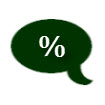 Home builder confidence increased in April to an index reading of 63, which was one point higher than for March and the highest reading in six months. Analysts said that April’s reading revealed more about housing market conditions in the past six months than it was an indicator of future market conditions.
Home builder confidence increased in April to an index reading of 63, which was one point higher than for March and the highest reading in six months. Analysts said that April’s reading revealed more about housing market conditions in the past six months than it was an indicator of future market conditions.
November’s builder confidence reading was the lowest since housing markets tanked in 2008, Builder confidence recovered over the past few months despite headwinds including higher materials costs and shortages of labor and buildable lots.
Home Builder Confidence Holds Steady Despite Headwinds
NAHB Housing Market Index readings over 50 indicate that most home builders are confident about housing market conditions. While April’s reading was comfortably above the benchmark, the average reading so far in 2019 is 61 as compared to 2018’s annual average reading of 67.
Component readings of the Housing Market Index were mixed in April. Builder confidence in current housing market conditions rose one point to 69; confidence in housing market conditions over the next six months dropped one point to 71 and the reading for builder confidence in buyer traffic rose three points to an index reading of 47. Readings for builder confidence in buyer traffic seldom exceeds 50.
Market Conditions Expected to Improve, but Obstacles Persist
Improving weather conditions and the peak home-buying season should boost builder confidence and housing market conditions, but rapidly rising home prices and affordability concerns could dampen housing markets and builder enthusiasm. Analysts report that no major changes are expected to mortgage rates in 2019. If this holds true, potential homebuyers are likely to take advantage of lower rates to buy homes. Analysts also said that initial impact of new tax laws has faded; more home buyers are expected to enter the market.
Market conditions depend on buyers and sellers; their motivations, resources and ability to “stay put” impact individual home sales. Buyers who depend on financing their home purchases are competing with increasing numbers of cash buyers; the National Association of Realtors ® traditionally reported about 10 percent of home sales were cash transactions, in recent years cash sales have increased to approximately 20 percent of home sales.
Homeowners are more likely to accept cash offers rather than accepting offers from buyers who must qualify for mortgages under a lengthy and precise approval process. Trends indicate that more homeowners are choosing to stay in their homes; this and exclusionary zoning laws in some areas are reducing the number of homes available.
For More Information


















